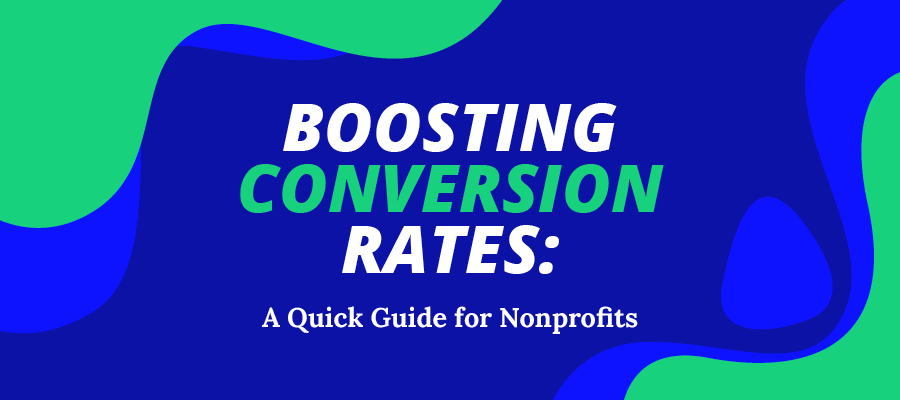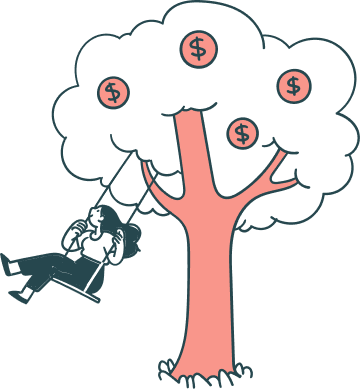As marketing and communications increasingly migrate to digital space, nonprofit organizations are using innovative new techniques in order to spread awareness about their organization and mission. A popular avenue for digital marketing is Google Ads. These advertisements appear at the top of any Google search and allow organizations to bid on valuable keywords and compete for attention.
At Nonprofit Megaphone, we help nonprofits manage and utilize their Google Ads account. As such, we present this guide on a common question among many nonprofits: how do you boost your conversion rate?
Before answering that question, it’s important to clarify what a conversion rate is and how it’s calculated. One of the most basic metrics to track in Google Ads or on your social media posts or campaigns is “clicks.” A click is tracked when someone clicks on the post or ad and is taken to your website. Clicks are an important starting point, but just because someone visited your website doesn’t mean they’ve engaged with your content.
The most valuable metric is conversion. A conversion is recorded when a visitor does something you want them to do. This can take a variety of forms, including:
- When a visitor spends more than 5 minutes on a site
- When a visitor watches a video
- When a visitor donates to the organization
- When a visitor signs up for the nonprofit’s newsletter
With this definition in mind, it’s easy to calculate the conversion rate. The conversion rate refers to the number of conversions divided by the number of visitors (or clicks). With the concepts and definitions out of the way, we can answer the question of how your nonprofit can boost its conversion rate.
Identify conversion goals
Since what qualifies as conversion varies between each organization, you have total control over what your conversion goals are. Therefore it’s important to think about what’s most important for your organization to track.
While you could qualify nearly anything as a conversion, doing so would pollute your data with trivial conclusions. A 99% conversion rate won’t tell you much about how your users engage with your site if that metric is made up of easily-attained goals.
Conversion goals should only be those things that tell you who your visitors are, what they care about, and how they engage with your organization.
Most organizations identify donations as a conversion goal. These are ideal because donations are vital to any nonprofit organization and it’s important to track how many of your overall visitors are donors and to track trends about visitors donation habits. Tracking donations is what we call a monetary goal. Monetary goals are any that create revenue for your organization in the form of donations, purchases, or subscriptions.
While they don’t drive revenue, non-monetary goals can be valuable data that give you valuable information about your visitors and how they engage with your organization. A common non-monetary goal is newsletter sign-ups. Asking for a donation is a harder ask than signing up for a free email newsletter, so you can learn a lot of valuable information by comparing the difference between the two conversion rates. Identifying goals is as much an art as a science, and it’s important to have a good strategy on what you’ll use the data for and what you’re trying to learn from it.
Once you have your goals in mind, you can then focus on observing the data and boosting your conversion rates. With non-trivial conversion goals, you’re free to try to get your conversion rate as high as possible. Boosting your conversion rate depends on a number of factors, but there are some things that any organization can do to improve its performance.
Provide high-quality content
It stands to reason that visitors are more likely to engage with your website if it contains high- quality content. We’ve written at length about this and described why high-quality content is important.
In short, high-quality content is more likely to engage the reader, help them understand your organization, answer their questions, and leave them with a satisfying experience.
Just like a brick-and-mortar marketing strategy, you want first-time visitors to have a memorable first impression of your organization. Doing so will keep them on your website longer and make them more likely to make a valuable conversion. Even if they don’t convert this time, high-quality content is more likely to create repeat visitors and amplify the chances of conversion.
Optimize your landing page
Every marketing campaign needs a landing page attached to it. As the name suggests, a landing page is any page that a visitor lands on after clicking the ad. Having good, optimized landing pages is vital to boosting your conversion rates. This is because the landing page is usually the first page a visitor sees on your website. Like any first impression, it’s important to make it count.
A good landing page will be optimized for the ad that was attached to it. While you could have every ad or post linked to your homepage, you’ll likely confuse visitors who were expecting something else. A good marketing strategy is to design your marketing with landing pages in mind.
For example, if you have a Google Grant ad that is linked to the question “What Is A Food Pantry?” then you should create a landing page addressing that exact question and succinctly discussing how your organization relates to the question. This simple landing page design answer’s the visitor’s question and gives them clear next steps that can lead to a conversion.
While this approach is good for any general landing page, you’ll want to take extra care when designing landing pages for your highest-value conversions such as donations. Driving immediate donations via Google Grant Ads or social media is difficult, but can be made easier by optimizing your donation page.
Much has been written about how to do this, and what tactics work best for your organization may depend on numerous factors. In general, your donation page should be clean, easy, and welcoming. It’s hard to ask people for money, so you want to minimize anything that may dissuade someone from supporting your nonprofit.
Often, this means making the donation process simple with easy-to-use donation interfaces that are easily understood. In addition, you should carefully brand your donation page to fit with the rest of your website. If the designs differ, the user may be worried that they’re getting phished.
Finally, it’s good to offer many different ways to donate. This not only includes various payment methods but also one-time and recurring donations. Donors vary widely in how much they are willing to give at any given time. Giving them the option to give as much as they prefer fosters goodwill and makes it easy for them to support you.
Create a compelling call to action
The final piece of advice concerning how to boost your conversion rates has to do with creating good calls to action. A Call To Action (CTA) is a catchy phrase or slogan that entices the visitor to take the next step. Usually, CTAs are affixed to buttons or panels that make them visually distinct from the rest of the page. A good CTA asks the visitor to do something important in the most concise way possible, asking them to click and learn more.
What an effective call to action looks like will differ depending on the mission and conversion goals of the organization. If your goal is to advocate or raise awareness of an issue, you may want to talk about that issue in the CTA and link to a relevant page in order to drive traffic. For others, donations are the most important thing, requiring that you demonstrate how a donation can go a long way towards fulfilling your mission. No matter what your organization’s goals are, using CTAs that are eye-catching, engaging, and inviting are sure to boost your conversion rate.
Using digital marketing tools and starting a campaign are only the first steps toward taking your website to the next level. By having a strategy and clear goals, you can use analytics and other data to see how users are engaging with your site and whether they are taking actions that are most helpful for your organization. Taking this into account will help you better understand your existing audience and help you compete against similar nonprofits for donors and supporters.
Methods of boosting your conversions aren’t always easy, but there are techniques that every organization can benefit from. Having clear goals, providing quality content, optimizing landing pages, and taking advantage of calls to action will benefit any website and grow the digital presence of your nonprofit. From there, it’s up to you to respond to the data and continue to refine your digital marketing approach.

Grant Hensel is the CEO of Nonprofit Megaphone, an agency focused 100% on Google Grant Management for nonprofits. NPM is honored to manage the Google Grant for 370+ leading nonprofits worldwide and to be an inaugural member of the Google Ad Grant Certified Professionals community.



